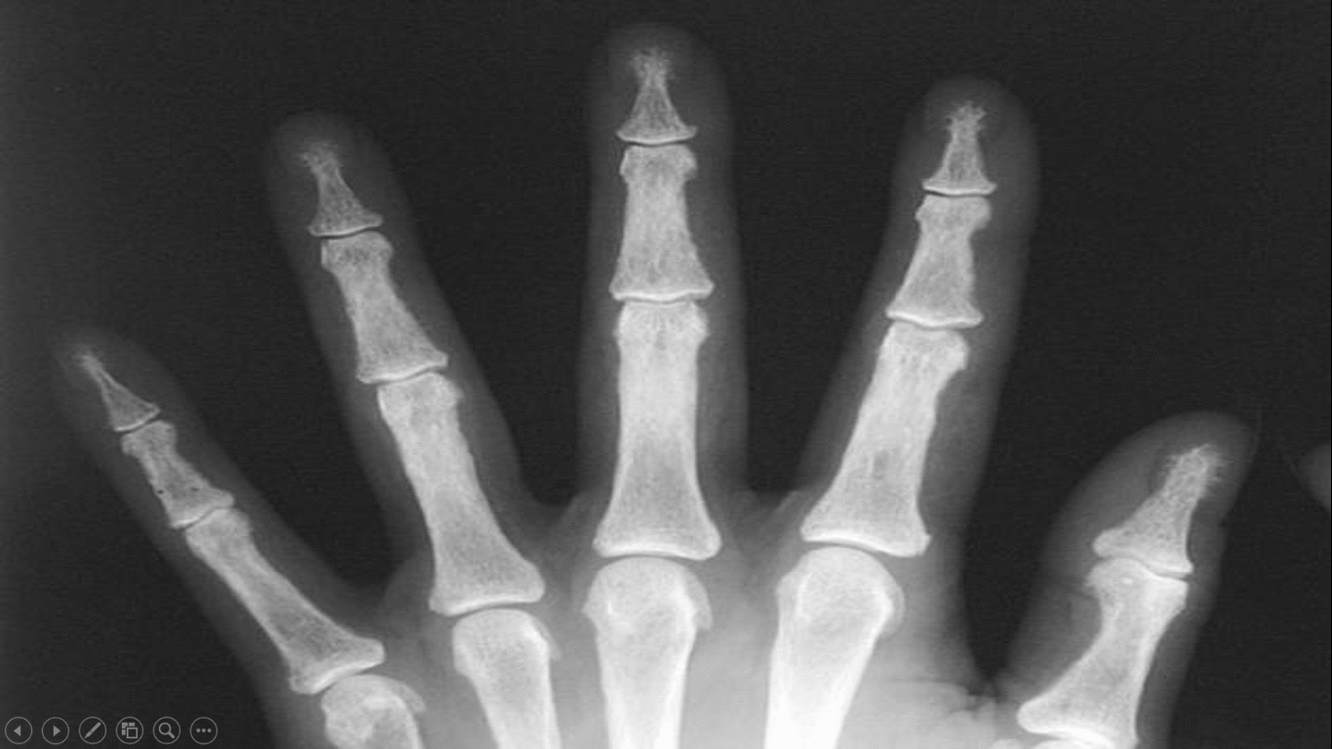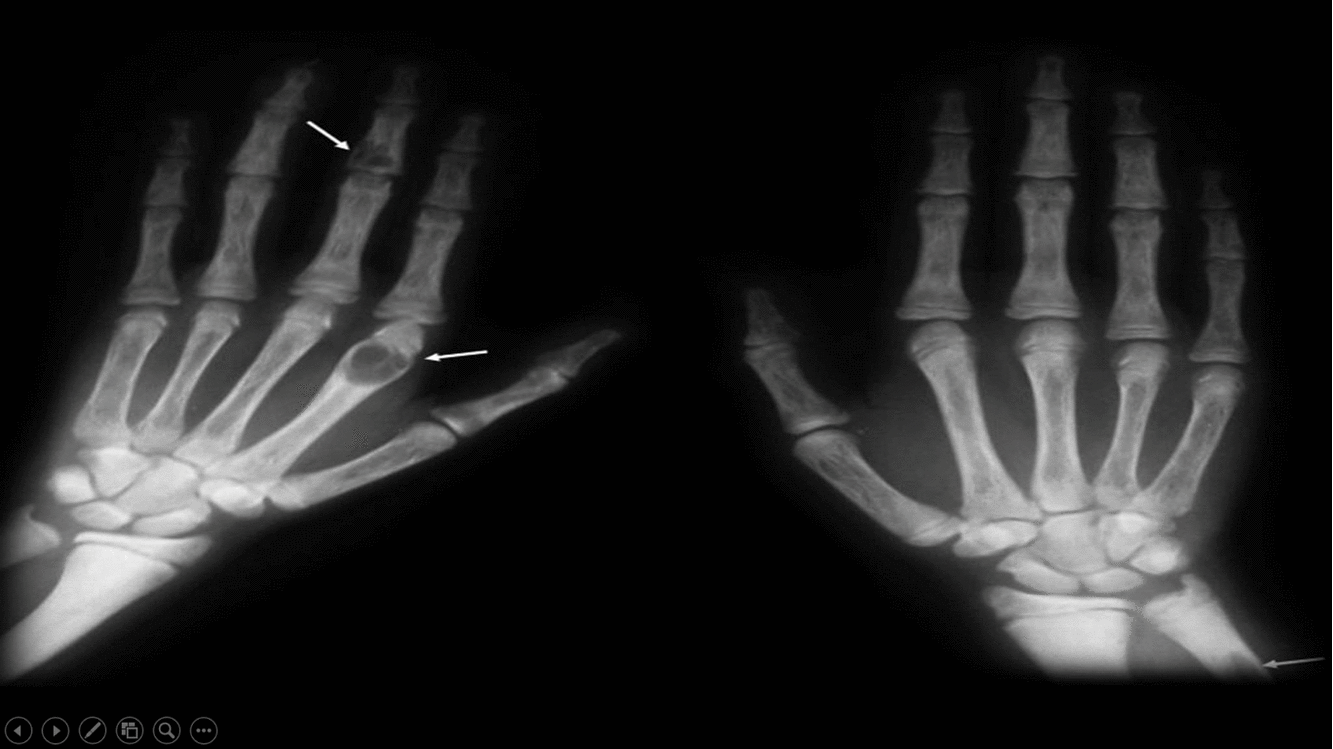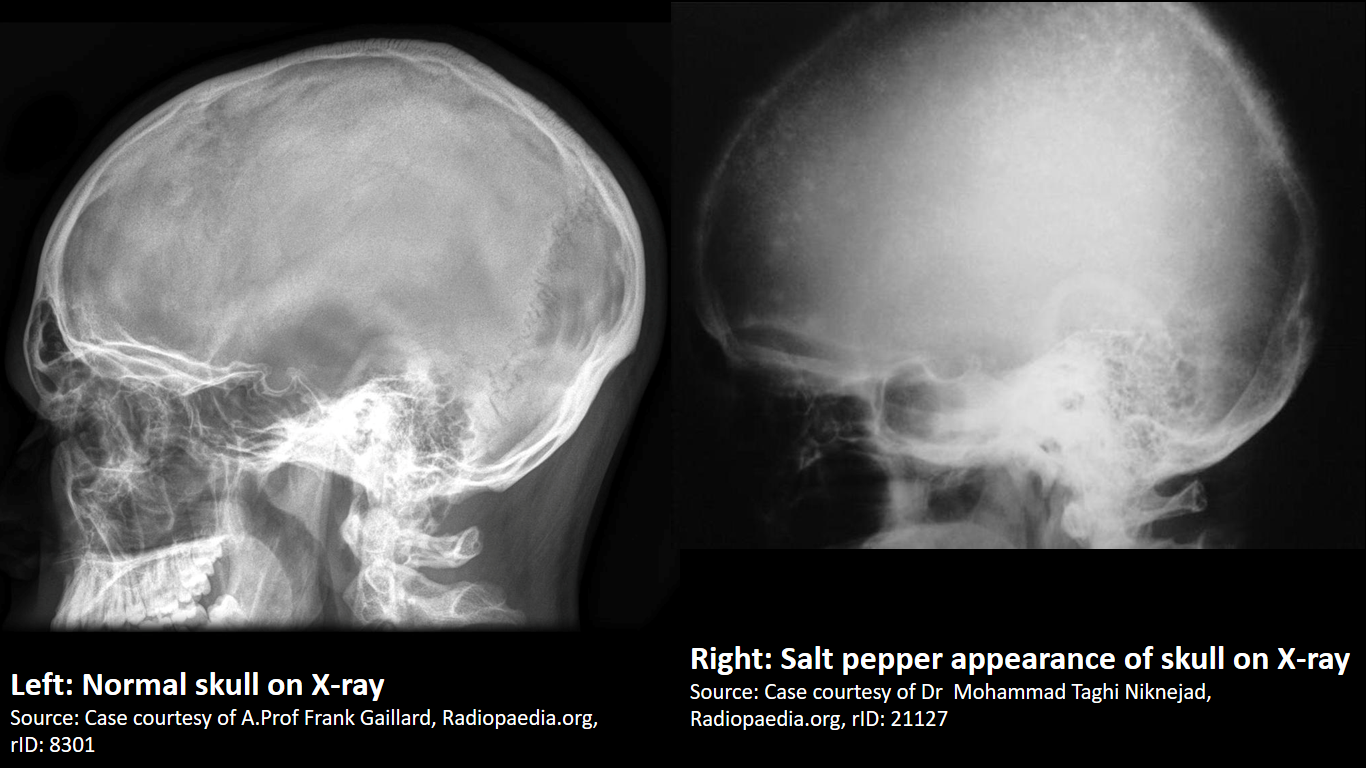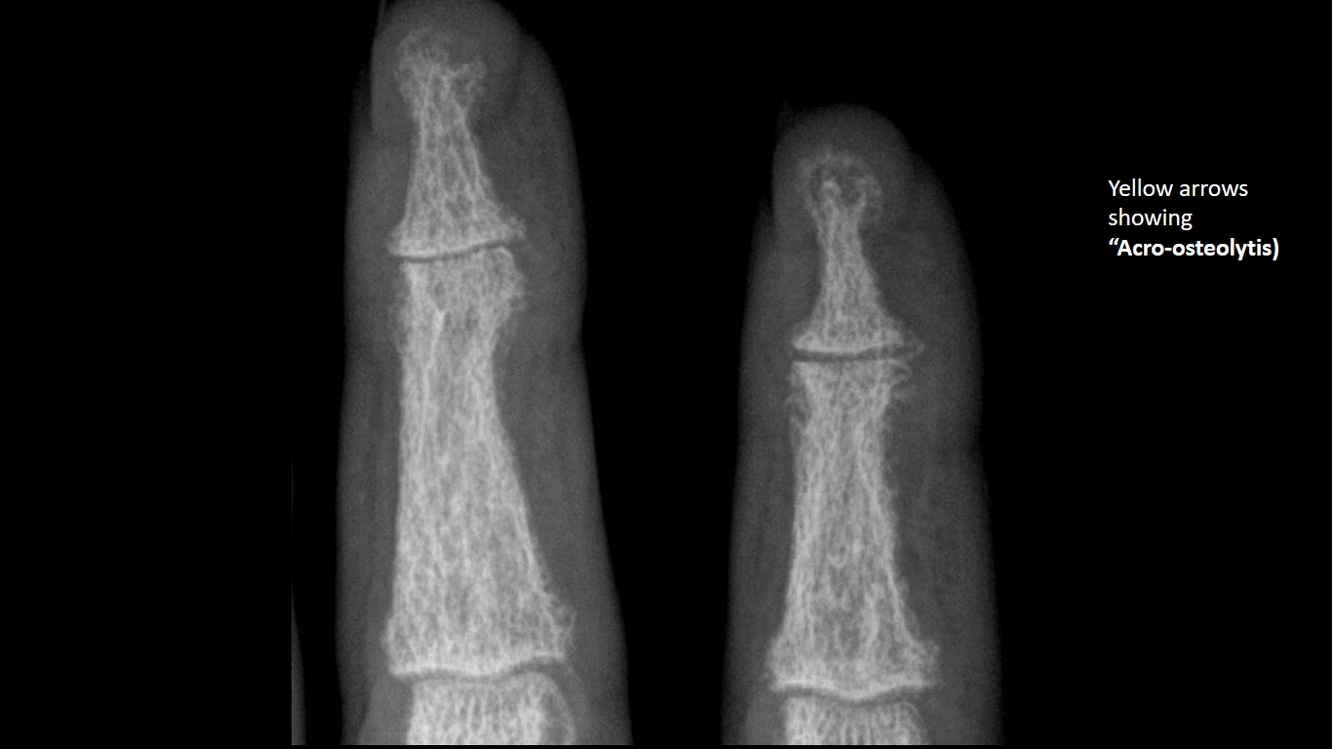Multiple endocrine neoplasia type 1 x ray
|
Multiple endocrine neoplasia type 1 Microchapters |
|
Differentiating Multiple endocrine neoplasia type 1 from other Diseases |
|---|
|
Diagnosis |
|
Treatment |
|
Case Studies |
|
Multiple endocrine neoplasia type 1 x ray On the Web |
|
American Roentgen Ray Society Images of Multiple endocrine neoplasia type 1 x ray |
|
Directions to Hospitals Treating Multiple endocrine neoplasia type 1 |
|
Risk calculators and risk factors for Multiple endocrine neoplasia type 1 x ray |
Editor-In-Chief: C. Michael Gibson, M.S., M.D. [1]; Associate Editor(s)-in-Chief: Aravind Reddy Kothagadi M.B.B.S[2] Ajay Gade MD[3]]
Overview
An x-ray may be helpful in the diagnosis of hyperparathyroidism of multiple endocrine neoplasia type 1. Findings on an x-ray suggestive of primary hyperparathyroidism includes subperiosteal bone resorption, endoosteal bone resorption, subchondral resorption, subligamentous resorption, intracortical resorption, osteopenia, brown tumors, salt and pepper sign in the skull (pepper pot skull), and chondrocalcinosis.
X Ray
An x-ray may be helpful in the diagnosis of hyperparathyroidism of multiple endocrine neoplasia type 1. Findings on an x-ray suggestive of primary hyperparathyroidism includes subperiosteal bone resorption, endoosteal bone resorption, subchondral resorption, subligamentous resorption, intracortical resorption, osteopenia, brown tumors, salt and pepper sign in the skull (pepper pot skull), and chondrocalcinosis.
- X-ray is the preferred imaging for diagnosis of secondary hyperparathyroidism as majority of findings are radiological.
- Findings in secondary and tertiary hyperparathyroidism are often associated with the osteosclerosis of renal osteodystrophy, and the osteomalacia of vitamin D deficiency and includes subperiosteal bone resorption,subchondral resorption, subligamentous resorption, severe osteopenia, osteosclerosis, brown tumor, amyloid deposition, soft tissue and vascular calcification, superior and inferior rib notching, and osteonecrosis.
Primary hyperparathyroidism
Finding in primary hyperparathyroidism includes:[1]
| X-ray Findings | Description |
|---|---|
| Subperiosteal bone resorption | |
| Endoosteal bone resorption |
|
| Subchondral resorption |
|
| Subligamentous resorption |
|
| Other findings |
|




References
- ↑ Lachungpa T, Sarawagi R, Chakkalakkoombil SV, Jayamohan AE (2014). "Imaging features of primary hyperparathyroidism". BMJ Case Rep. 2014. doi:10.1136/bcr-2013-203521. PMC 3962932. PMID 24614783.